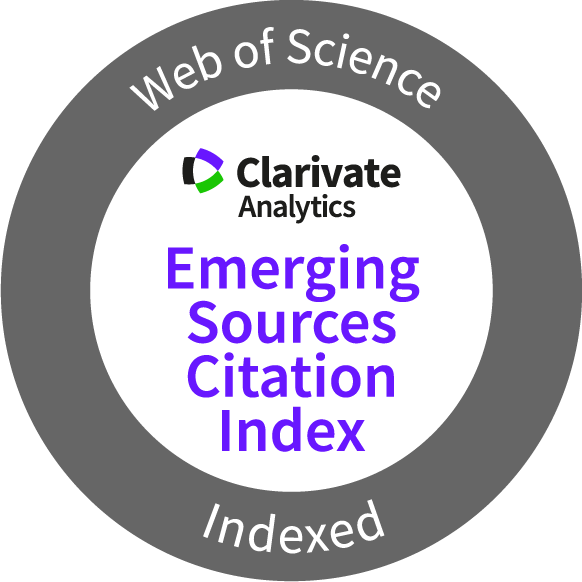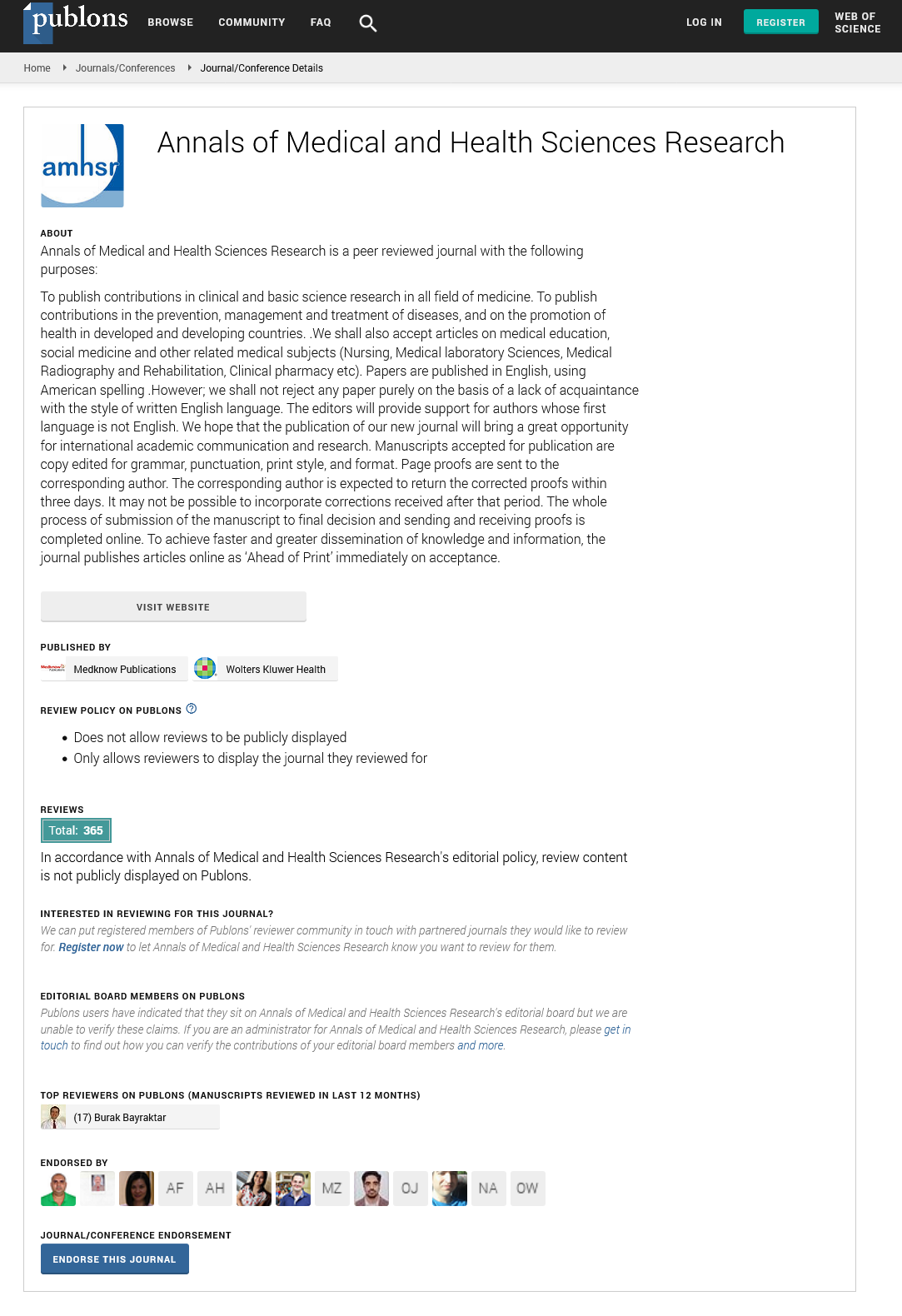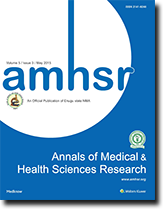A Common Heuristic in Medicine: Anchoring
2 Department of Pulmonary and Critical Care Medicine, Henry Ford Hospital, Grand Blvd Detroit, United States
Citation: Rehana RW, et al. A Common Heuristic in Medicine: Anchoring. Ann Med Health Sci Res. 2021;11:1461-1463.
This open-access article is distributed under the terms of the Creative Commons Attribution Non-Commercial License (CC BY-NC) (http://creativecommons.org/licenses/by-nc/4.0/), which permits reuse, distribution and reproduction of the article, provided that the original work is properly cited and the reuse is restricted to noncommercial purposes. For commercial reuse, contact reprints@pulsus.com
Abstract
Anchoring bias is a type of heuristic that uses an initial source of information as an anchorfor basis of decision making. Then judgments and thought processes are led by this sole foundation. There are many different types of influences and bias used in medical decision making, which has prompted concerns regarding their impact on diagnostic inaccuracies. Studies have identified anchorconducted in medical literature, clinical vignettes and real life scenarios. These cognitive bias and aversions to ambiguities can lead to medical errors, inappropriate use of resources, and harm to the patient. We present a unique case of acute metabolic encephalopathy impacted by anchoring diagnosis of drug overdose that later confirmed a diagnosis of brain tumor.
Haberler
Haberler
Haberler
Haberler
Haberler
Haberler
Haberler
Haberler
Haberler
Haberler
Haberler
Haberler
Haberler
Haberler
Haberler
Haberler
Haberler
Haberler
Haberler
Haberler
Haberler
Haberler
Haberler
Haberler
Haberler
Haberler
Haberler
Haberler
Haberler
Haberler
Haberler
Haberler
Haberler
Haberler
Haberler
Haberler
Haberler
Haberler
Haberler
Haberler
Haberler
Haberler
Haberler
Haberler
Haberler
Haberler
Haberler
Haberler
Haberler
Keywords
Anchoring diagnosis; Cognitive bias; Neurosurgery; Critical care
Introduction
Anchoring bias is a type of heuristic that uses an initial source of information as an “anchor” for basis of decision making. [1] Then judgments and thought processes are led by this sole foundation. There are many different types of influences and bias used in medical decision making, which has prompted concerns regarding their impact on diagnostic inaccuracies. [2] Studies have identified “anchoring” conducted in medical literature, clinical vignettes and real life scenarios. [3] These cognitive bias and aversions to ambiguities can lead to medical errors, inappropriate use of resources, and harm to the patient. [2]
We describe a case of a 29-year-old male with past medical history significant of chronic headaches, who presented to the emergency department from home via police escort for suspected polysubstance overdose. Police were called for questionable seizure and medication overdose. They were unsure what medications the patient took. The patient stated taking an unknown amount of prescribed clonazepam, sumatriptan and ibuprofen. He was unable to provide the timing or amount of ingestion. Physical exam was positive for confusion, bradycardia and hypertension. Urine drug screen was positive for amphetamine, benzodiazepine and cannabinoids. A few hours later the patient continued to appear drowsy with intermittent agitation requiring soft restraints. On hospital day 1, he was noted to be very lethargic, unresponsive and hypoxic on room air. Code blue was called and patient was intubated and transferred to the ICU. Upon reexamination, the patient’s pupils were dilated and fixed. Subsequent CT head showed a large 10 cm hyperdense right frontal lobe mass with resultant uncal herniation and severe hydrocephalus [Figure 1 and Figure 2]. This was suspicious for meningioma or tumor. After successful contact with the family and getting a history from the mother, she reported significant personality changes, increasingly odd behaviors, memory loss, worsened headaches and gait disturbances over multiple years. The mother had assumed the patient was using drugs. She also confirmed the number of pills left in the prescription bottles was accurate. At this point, the patient was transferred to a tertiary hospital for escalation of care and neurosurgical intervention where he ultimately died.
Effects of Anchoring Diagnosis and Synthesis
We focus our case on the effects of anchoring diagnosis and synthesis of literature. Although these heuristics are recognized, it is poorly understood due to the difficulty in formulating research. The struggles include and are not limited to lack of high quality data, the scale or level of detail present in data and the intangible thoughts of clinicians decision making. [4] In the practice of internal medicine, up to 75% of errors are thought to be cognitive in origin. [5] These errors were studied and revealed faults in a variation of critical thinking steps such as information gathering, formulation of context, association triggers, processing and verification. [5] Further studies divulged into the personal reflection of errors which enforces a loop system response to thought process. It is becoming increasing apparent that cognitive bias is a result of significant diagnostic error and the likelihood of diagnostician error is unfortunately at risk. However, this does not correlate with cognitive ability or measure of intellect. [6]
In the realm of cognitive bias, there are many different kinds of bias which have impacted clinical decision making. For example, a young adult comes into the emergency department with chest pain. The clinician assessing this patient just missed a diagnosis of aortic dissection on a prior patient. During the evaluation of this new young patient, it appears there is no medical history or clinical evidence to support the diagnosis of aortic dissection. However, the clinician wants to order a CT scan “just in case”. This is known as “availability bias”. In this instance, the emotional component and recent event of prior missed diagnosis, the brain is now primed for such a diagnosis. Additionally, this can concurrently coexist with another bias known as “base rate neglect”. The clinical is aware the diagnosis would be a rare finding in this patient but their base rate neglect bias overrides their knowledge regardless of a low probability of a positive result. Therefore, we subject this young patient with iodine contrast and radiation from the imaging. The bias is not limited to the emergency department as it can occur in the clinic or inpatient setting.
Pain and Altered Mental Status
Pain and altered mental status are commonly seen chief complaints in the hospital. [7,8] These presentations can be variable in degree of acuity and severity. The assessments of these patients can be skewed if a patient has underlying psychiatric issues or is a “frequent flyer” to the hospital. This is a potential source for bias. These types of bias can be explicit, such as stereotypes or blatant prejudice or implicit, such as unintentional or unconscious bias. Interventions to mitigate the impact of explicit and implicit bias have been through perspective thinking about counter stereotypical examples, however the debate continues whether or not change is enduring. [9]
Many approaches to assess and evaluate clinical cognitive errors have been ensued. One of the methodical approaches is the use of pedagogical models. These series of cognitive models or theoretical constructs are derived from learning theory that enables the implementation of specific instructional and learning strategies. [10] Another concept reveals debiasing strategies, which is designed to flip physicians thinking pattern into a slower, deliberate, analytic mode to optimize diagnostic decision making. [11] Further research and studies are necessary to implement these strategies into clinical practice for beneficial outcomes.
We present a unique case of acute metabolic encephalopathy impacted by anchoring diagnosis of drug overdose that later confirmed a diagnosis of brain tumor. If we had spent more time obtaining all the facts, we could have obtained a CT head and arrived at a diagnosis before the patient herniated. Inability to recognize cognitive bias, runs the risk of diagnostic inaccuracies, unnecessary prescribed medications and underestimation of testing. [12] More importantly, addressing anchoring allows the opportunity to decrease patient harm, guide future occurrences and tailor research towards minimizing these outcomes. [13] This case largely consumes the cognitive heuristics that challenges our daily clinical decision making skills and the goal is to minimize, modify and mitigate the common errors made in clinical medicine.
Conflict of Interests
The authors declare that they have no conflict of interest.
REFERENCES
- Rounds PG. Anchoring bias with critical implications. Aorn J. 2016;103:658-631.
- Saposnik G, Redelmeier D, Ruff CC, Tobler PN. Cognitive biases associated with medicaldecisions: a systematic review. BMC Med Inform Decis Mak. 2016;16:138.
- Blumenthal-barby JS, Krieger H. Cognitive biases and heuristics in medical decision making: a critical review using a systematic search strategy. Med Decis Making. 2015;35:539-557.
- O'sullivan ED, Schofield SJ. Cognitive bias in clinical medicine. J R Coll Physicians Edinb. 2018;48:225-232.
- Kassirer JP, Kopelman RI. Cognitive errors in diagnosis: instantiation, classification, and consequences. Am J Med. 1989;86:433-434
- Stanovich KE, West RF. On the relative independence of thinking biases and cognitive ability. J Pers Soc Psychol. 2008;94:672-695.
- Todd KH, Ducharme J, Choiniere M, Crandall CS, Fosnocht DE, Homel P, et al. Pain in the emergency department: results of the Pain and Emergency Medicine Initiative (PEMI) multicenter study. J Pain. 2007;8:460-466.
- Xiao HY, Wang YX, Teng-da Xu HD, Guo SB, Wang Z, Yu XZ. Evaluation and treatment of altered mental status patients in the emergency department: Life in the fast lane. World J Emerg Med. 2012;3:270-277.
- Galinsky AD, Moskowitz GB. Perspective-taking: decreasing stereotype expression, stereotype accessibility, and in-group favoritism. J Pers Soc Psychol. 2000;78:708-724.
- Biku T, Demas T, Woldehawariat N, Getahun M, Mekonnen A. The effect of teaching without pedagogical training in St. Paul's Hospital Millennium Medical College, Addis Ababa, Ethiopia. Adv Med Educ Pract. 2018;9:893-904.
- Daniel M, Carney M, Khandelwal S. Cognitive debiasing strategies: a faculty development workshop for clinical teachers in emergency medicine. Med Ed Portal. 2017;13:10646.
- Croskerry P. Diagnostic failure: a cognitive and affective approach. 2005.
- Meyer AN, Payne VL, Meeks DW, Rao R, Singh H. Physicians' diagnostic accuracy,confidence, and resource requests: a vignette study. JAMA Intern Med. 2013;173:1952-1958.






 The Annals of Medical and Health Sciences Research is a monthly multidisciplinary medical journal.
The Annals of Medical and Health Sciences Research is a monthly multidisciplinary medical journal.